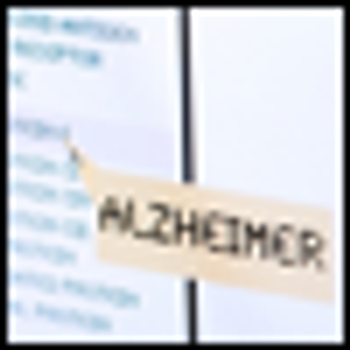
Before jumping the gun to a premature and potentially harmful diagnosis, why not watchfully wait a few more weeks to determine if the grief is severe and enduring enough to warrant the label of mental disorder.


Before jumping the gun to a premature and potentially harmful diagnosis, why not watchfully wait a few more weeks to determine if the grief is severe and enduring enough to warrant the label of mental disorder.

Any effort to develop a diagnostic manual for world-wide use must grapple with the question of cross-cultural applicability. The description and diagnostic criteria for schizophrenia must work as well in East Timor as in the US or France. In this piece I choose PTSD to show the complexity of the cultural issue for DSM-5.

The furor surrounding the recently proposed Alzheimer's Guidelines was provoked by their premature attempt to introduce early diagnosis, well before accurate tools are available. The same laudable, but currently clearly unrealistic ambition has propelled two of the worst suggestions for new diagnoses in DSM-5: Psychosis Risk and Mild Neurocognitive.

In an earlier posting, I considered the merits and flaws of the DSM-5 online website. For this posting, I consider the significance and implications of a cyber-DSM.

Dr Muller, in his piece “Psychiatric Symptoms Can be Understood Even When These Symptoms Cannot Be Explained,” makes a number of assertions about DSM-III and its successors that reflect a mischaracterization of its “descriptive approach.”

Since the early twentieth century, when Alois Alzheimer and Emil Kraepelin constructed it as a unified clinical-pathological entity, Alzheimer’s disease has been both one of the most stable and one of the most problematic neuropsychiatric entities.

Fads in psychiatric diagnosis come and go and have been with us as long as there has been psychiatry. The fads meet a deeply felt need to explain, or at least to label, what would otherwise be unexplainable human suffering and deviance.

Why not define mental disorder just on the presence or absence of the characteristic cluster? Why was it felt to be necessary to also require distress or impairment?

Every month or so, someone (usually very smart and passionate) sends me a detailed proposal for a new diagnostic system offered as an alternative to the jumbled, pedestrian, atheoretical, and purely descriptive method used in DSM.

When I was an undergraduate studying molecular biology in the early 1990s when the Human Genome Project had just begun, my required coursework included several lectures on the ethical implications of sequencing, understanding, and ultimately being able to manipulate the “code of life.”

Professor Hannah Decker, a distinguished historian by trade, has posted a thorough, fair, and sprightly history of the DSM5 controversy. We are all lucky to have her as chronicler.

Many have challenged the claim of the APA/DSM-5 Task Force that the current process is the most “open process in the history of the manual.” Few have actually provided an argument or evidence of why this might, or might not, be so. What has changed dramatically in the DSM process since DSM-IV in 1994, and even DSM-IV-TR in 2000, is the rise of Internet culture and the “blogosphere.” What does this have to do with DSM-5?

As an officer of the APA, I was one of the prime movers of the limitations on, and vetting of, potential participants in the preparation of the DSM5.

As an officer of the APA, I was one of the prime movers of the limitations on, and vetting of, potential participants in the preparation of the DSM-5.

I just finished reading Dr Zucker’s retort to Dr Frances’ critique of proposed categories for paraphilias in DSM5, as well as Dr Frances’ reply.

The recently posted draft of DSM5 makes a seemingly small suggestion that would profoundly affect how grief is handled by psychiatry.

Surprisingly, the American Psychiatric Association (APA) has never established formal guidelines that address what qualifications are required for one to use DSM.

The problems in the preparation of DSM5 have arisen from its unhappy combination of excessive ambition and poor execution. A prime example is the totally unrealistic ambition to provide diagnostic rating scales for each section of DSM5. The goal is to help standardize interviewing in order to increase diagnostic reliability. Surely, it would be nice to have clinicians gather the most pertinent information in a consistent and systematic way.

Time is running out on DSM5 and the mistakes keep piling up. The latest puzzling misstep is the design for the DSM5 field trials. The APA will conduct a remarkably complex and expensive reliability study to determine whether 2 raters can agree on a diagnosis. It will devote enormous resources to answer a question that once mattered greatly but is now of quite limited interest. Meanwhile, DSM5 will perversely avoid the one question that does really count: ie, what will be its likely impact on the rates of psychiatric diagnosis? At least $2.5 million and 1 year later (or possibly 2, if things get delayed as I expect they will), DSM5 will still be flying completely blind on the safety of its proposals.

DSM5 first went wrong because of excessive ambition; then stayed wrong because of its disorganized methods and its lack of caution. Its excessive and elusive ambition was to aim at a “paradigm shift.” Work groups were instructed to think creatively, that everything was on the table. Accordingly, and not surprisingly, they came up with numerous pet suggestions that had in common a wide expansion of the diagnostic system-stretching the ever elastic concept of mental disorder. Their combined suggestions would redefine tens of millions of people who previously were considered normal and hundreds of thousands who were previously considered criminal or delinquent.

The recently posted criteria sets for DSM5 are a mess. The writing is unclear, inconsistent, and imprecise. Unless they are edited and drastically improved, any field testing based on them will be a waste of time, effort, and money- and DSM5 may not be usable.

Nine months ago, Dr. Robert Spitzer and I wrote to alert you that DSM5 had gone badly off track. We warned that its process was unsupervised, poorly planned, secretive, disorganized, and was falling far behind schedule. You took the appropriate steps of appointing an Oversight Committee and delaying for 1 year the target dates for field trials and for the publication of DSM5.

I often get asked if practical consequences should play an important role in DSM5 decisions. It was posed again yesterday in response to my blog "Bipolar II Revisited" which tangentially raised the issue.

The recently posted first draft of DSM-5 has suggested a whole new category of mental disorders called the "Behavioral Addictions." The category would begin life in DSM-5 nested alongside the substance addictions and it would start with just one disorder (gambling).

Sometimes you spot a serious problem and figure out a very well-intended solution, only to discover eventually that your solution created as much trouble as the original problem. The workers on DSM5 have spotted an enormously worrying problem-the wild overdiagnosis of childhood bipolar disorder (BD) which has led to a massive increase in the use of antipsychotic and mood stabilizing medications in children and teenagers.